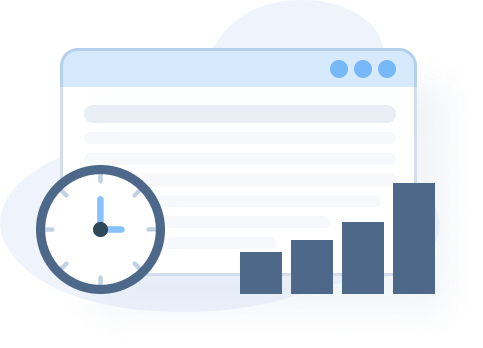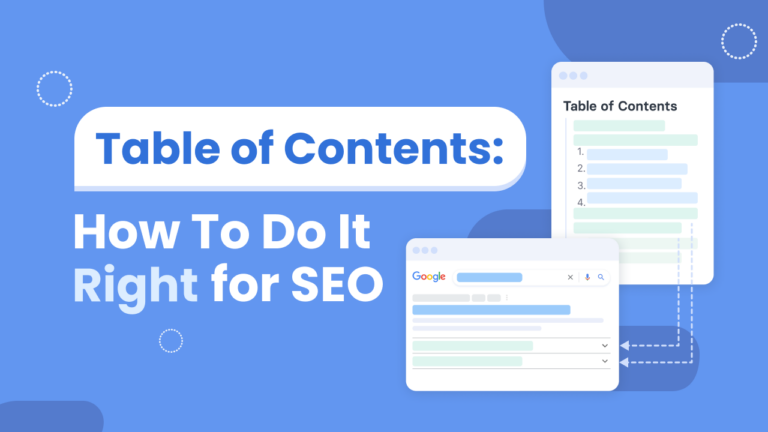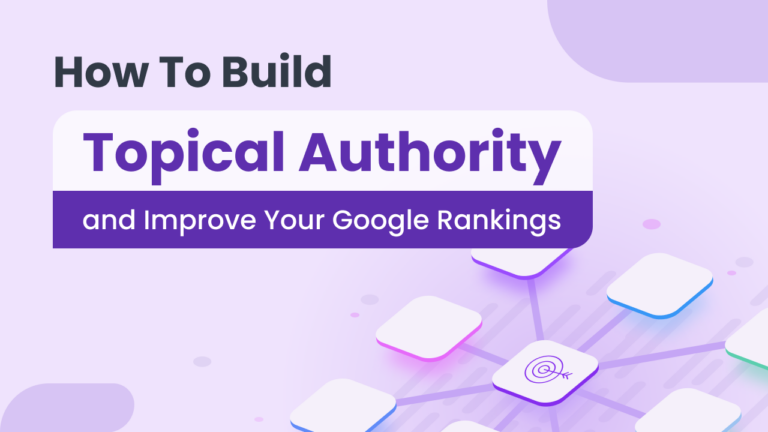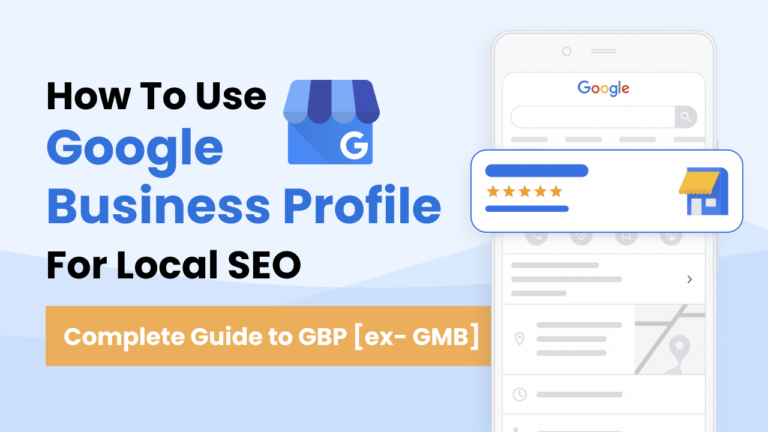These days, one of the first steps for any business to be easily discoverable and boost sales is to have an online presence. As a result, the internet has become overpopulated with millions of pages, with some websites getting lost in the mix. Now the question is, what can you do to help customers in your industry find you?
To answer this question, one must first understand what search engine optimization (SEO) is, and the differences between onsite and offsite SEO.
What Is Search Engine Optimization?
Search engine optimization is the process of optimizing or “fixing” a website so that search engines can find it when users make certain search queries through text or by voice search. These results come up on search engine results pages, or SERPs, and are listed by relevance.
Optimizing a website allows search engines such as Google and Bing to crawl through its pages and index them. Topic and keyword clustering play an important role here, because the more organized and clearly categorized your website’s content is, the easier it is for these search engines to crawl your site and determine whether your content is relevant to users’ queries and satisfies user intent. Structuring your site also plays a big role in the likelihood that it will be featured in one of the SERP features such as the Featured Snippet, the PAA box, or the Knowledge Panel.
Since Google introduced its revolutionary algorithms Hummingbird and RankBrain, machine learning has taken a key role in determining the most relevant matches to user queries. These search queries go through interpretation models that consider various factors such as location and intent. The algorithms also identify if a page actually serves the user’s needs by analyzing its content for relevant links and content depth.
White hat SEO refers to the best practices in optimization, while black hat SEO refers to techniques that mislead search engines. If a website gets flagged for black hat SEO practices, then that website may be removed from the index, therefore proving it unsearchable.
What Is On-site SEO (also known as on-page SEO)?
Onsite SEO is all about your website and how good it is according to search engines. The goal is to make it possible for “spiders” or web crawlers to browse your website’s content.
These web crawlers check each publicly accessible page on your website and index its content so that it can be accessed easily when users search about a particular topic through text or voice. The more optimized your pages are, the higher their chances are of being listed first on the search results page. Some factors that are put into consideration are:
Page title tag and description
The page title tag and description should be clear, and they should contain the target keywords you aim to focus on. These are the first things that come up when your website is searched.
URL
This should be short and clean. Shorter URLs with the proper use of dashes in between words are prioritized more than long URLs with a lot of numbers and symbols. For example, a page from a restaurant’s website would look better with a URL like this:
www.restaurant.com/italian-food
Than this:
www.restaurant.com/italian-food-1254728-25793782.html
Images and their alt codes
All pictures on a webpage should have alt codes that contain the targeted keyword. Given the restaurant example above, images of a restaurant’s storefront would have an alt code that says, “Italian Food Restaurant Los Angeles California.”
Internal links
These are the links that connect to other pages of your website. Besides enhancing the user’s experience, they are also great for helping web crawlers see more of your website.
Make sure to organize your website into cluster topics and determine which pieces of content belong to which clusters. The main topic of the pillar page should be represented by a high-volume short keyword, while the cluster pages should be focused on a lower-volume long-tail keywords. Your pillar pages and cluster content should then be hyperlinked to each other, and you should make sure that the pillar page uses the right long-tail keyword as anchor text, while the cluster pages should use the high-volume short keyword that corresponds to the pillar page. It’s easier to get your cluster content pages, which focus on a less competitive keyword, to rank higher on search engines. Assuming your content is valuable, these pages will help you build authority on specific topics. Thanks to your internal links, that authority will be passed on to your pillar pages. After putting in the work and building your pillar pages, here is how to determine if your website is ranking for the keywords on Google.
Recentness or regularity of updates
Websites that are regularly updated are chosen over websites with dated content. Keep the website updated with the latest news and offers. Websites that have articles written a long time ago will least likely be chosen to come up on the front page of search results.
Knowing how search algorithms work will go a long way in optimizing a website. For example, having clustered keywords makes it easier for search engines to categorize your website and determine its purpose. This gives the website a higher chance of showing up on the first page of SERPs if crawlers confirm that your website’s content satisfies users’ true intent when making search queries.
Page load speed
Page load speed not only impacts the user experience but also the ranking of your website on Google. Make sure to check your website’s load speed by using Google’s PageSpeed Insights test.
On-site SEO: what to avoid
If your website content is stuffed with repetitive keywords that don’t provide value, search engines may flag this and give you a negative point for it. There are many things to avoid when it comes to content optimization besides keyword stuffing. Some things to avoid include, but are not limited to:
- Burying your pages in JavaScript and Flash elements
- Duplicating content
- Website cloaking (or keeping a website’s contents different between search engines and users)
- Creation of non-existent business entities
- Posting inaccurate business information (inaccurate phone numbers and addresses)
- Buying and/or posting fake reviews
Keep in mind that websites should be built for audience viewing. Some people make the mistake of building their website according to search engine algorithms, which creates no value to the user. Website content must have value to the user and must be genuine. The more focus you put on providing good content, the better your website’s chances are of being found.
What Is Off-site SEO (also known as off-page SEO)?
Offsite SEO is as important as onsite SEO because it is what drives people toward the website. Having a website with good content isn’t enough. Creating good website content will bring in organic searches, but you can speed this up with promotion. However, optimizing offsite SEO might be a bit more difficult than onsite SEO because it requires an understanding of how other platforms work.
Building offsite SEO entails factors such as link building and social media marketing. Link building happens when other websites or blogs link back to your website (also called the “backlinks”). Unfortunately, this isn’t easy to get especially if your website’s content is unoriginal or not compelling at all. Creating good website content and providing value to the user will ultimately result in more people and more websites linking back to yours.
Meanwhile, social media marketing is all about having and regularly updating social media accounts for the business or website.
Other sources of offsite SEO includes brand mentions, specifically by notable entities such as news companies. It can also be done through guest blogging or having someone blog about your business. A good way to get guest bloggers is to reach out to already existing blogs that have the same focus as your website. Other examples of offsite SEO are email marketing and paid online advertisements.
The more inbound links there are to your website, the more visitors you will have. It is important to note that these should be links from genuine and highly respected companies and websites. If your website has well-written, valuable content, then people will most likely want to link back to your website.
It is also a good idea to consider press release services because they do the work and announce your newest content to most news outlets. Examples of these press release service websites include Business Wire and PR Newswire.
Onsite and Offsite SEO: What’s the Difference?
To put it simply, onsite SEO ensures that your website is built on its content’s relevance to search queries, while offsite SEO has to do with the posts and links that point back to your website and bring in the website traffic.
Onsite SEO is the overall “searchability” of your website. Factors such as your page title, internal links, and images play a big role in the optimization of your website.
Before showing up in search results pages, websites go through a “crawling” phase. Search engines look into the website and find the main keyword clusters associated with each page. Google Search Console is an easy way for you to see which keywords your website already ranks for.
As mentioned earlier, when your pages and target keywords are properly categorized and organized, these crawlers will more easily determine that your website is worthy of being ranked higher in SERPs. Do note, though, that it may be a bit more challenging to rank high on Google if your website is new.
Meanwhile, offsite SEO refers to all the efforts on other platforms and websites that link back to your website. Every article that refers to your website, every social media post that has your website’s content, and every post that has your brand name on it is a point towards good offsite SEO.
Important Things to Remember
Onsite and offsite SEO are both equally important. However, it’s a good idea to start working on onsite SEO first because you must have the content before you can promote it.
Take note that having the best marketing strategy for your website may not be enough. Even if you spend thousands of dollars on advertising your website, users won’t visit it if it has no value to them for your target audience.
It’s also good practice to try other content strategies such as creating infographics, videos, and other multimedia that will enhance the visitor’s experience.
Optimize your site for SEO with an AI content optimization software
As you can see, optimizing your website for off-site and on-site SEO is not a walk in the park. There’s a lot of work involved in implementing a good SEO strategy, but those SEO efforts will pay off in the long run. In the past, you would have to do all that work manually, and this would take hours. Over the past few years, several AI-powered content optimization software have been developed, in order to save writers, marketers and SEO specialists, hours of tedious manual work.
ZenBrief can help you conduct an AI content optimization. Developed by MIT data scientists, ZenBrief can dramatically reduce the time it takes to create content that will please both your audience and Google.





